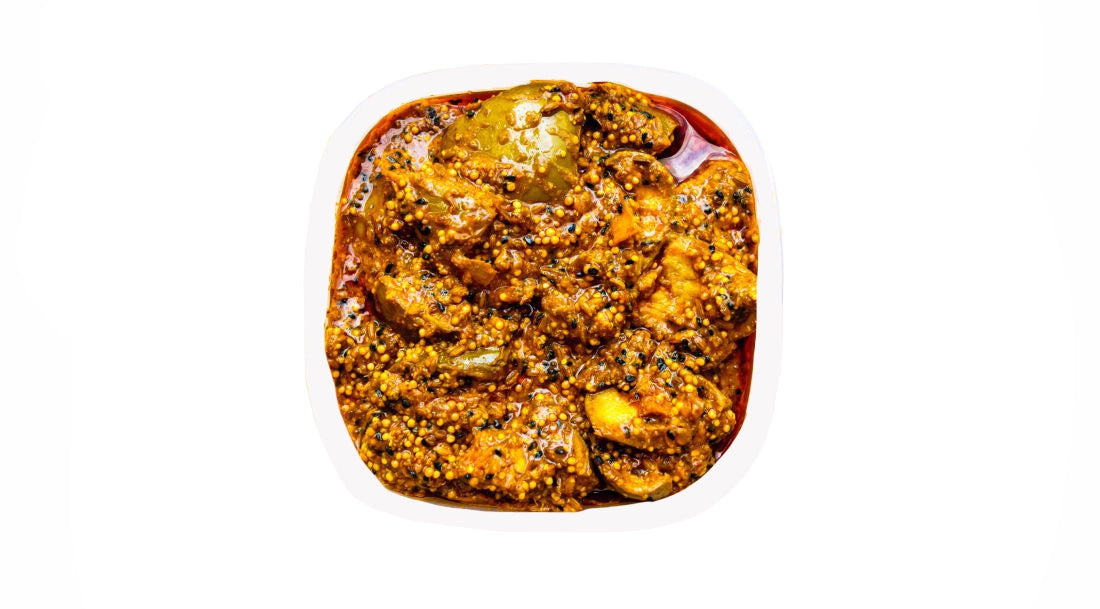
Pickles, or "achar", are very popular in India. They have many flavors, textures, and traditions. Some are spicy from red chilies. Some are cool from green limes. Just one bite can make you feel like you are traveling around India. But what lends Indian pickles their lip-smacking taste? The answer lies in the oil used.
Oil forms the foundation of the Indian pickling process. But choosing the right oil can make the difference between a tasty, tangy pickle and a rotten mush. Here’s a look at the commonly used oils and their benefits.
Mustard Oil
Mustard oil is a very popular oil used in India. It comes from mustard seeds. Indian pickles are vegetables or fruits preserved in oil and spices. Pickles are an important part of Indian food. Many Indian pickles like mango pickle use mustard oil. The oil helps keep the pickles fresh for a long time. It also gives them a special hot and pungent taste.
Mustard oil is thought to have health benefits too. It has omega-3 fatty acids that are good for the heart. Overall, mustard oil is an iconic ingredient in Indian pickles. Its bold taste and preservative qualities make it a beloved part of Indian cuisine.
Sesame Oil
The rich, nutty aroma of sesame oil aka gingelly or til oil makes it highly appeasing for pickling. A staple in South Indian kitchens, sesame oil contains high amounts of polyunsaturated fatty acids that enhance flavour and prolong freshness of pickles. Sesame oil along with chilli powder and turmeric powder rubbing on tender mango and lemon slices is a famous summer tradition down south.
Apart from mangoes, it is also used in pickling onions, lotus stems, ginger, garlic and mixed veggies. Its antioxidant properties minimise oil oxidation thus increasing pickle shelf life.
Sunflower Oil
The light golden sunflower oil is neutral in taste, which is why it’s preferred for fruit based pickles like raw mangoes, lemons, limes, green apples, pomegranate, figs etc. so their flavours are retained. Being high in Vitamin E and other antioxidants, it prevents quick spoilage.
The mild smell also makes it suitable for fussy eaters who don’t like pungent flavoured pickles. However, lack of strong flavour limits its usage for vegetable pickles.
Groundnut Oil
Also called peanut, moongphali or shengdana oil, this pale yellow oil is common for making sweet and spicy fruit pickles. Good quality groundnut oil doesn’t interfere much with pickle flavours. Rich in MUFA like mustard oil, groundnut oil also has similar antibacterial properties that boost pickle’s shelf life.
Apart from raw mango and citrus fruit slices, groundnut oil is also popular for adding the extra crunch to cabbage, cauliflower, carrot and green chilli pickles across Gujarat and Maharashtra.
Olive Oil
The healthy Mediterranean oil is fast making inroads into urban Indian homes. Derived from olive fruit pulp, olive oil contains high amounts of antioxidants. Its light flavour and texture gives it an edge over other oils, especially for pickling expensive fruits like strawberries, blueberries, kiwi, cherries, mulberries, figs etc. without overpowering their taste.
To enhance flavour, some aromatic herbs like rosemary, thyme or oregano can be added to the olive oil used for pickling.
Coconut Oil
Lastly, the tropical and versatile coconut oil also deserves a spot on the list of oils for pickling. With its nutty aroma, coconut oil retains all the goodness of fruits and prevents oxidation. Across Southern coastal states like Kerala, Karnataka and Maharashtra, fresh coconut oil is used for pickling pineapples, bitter gourd, gooseberries, dried fish etc. Its lauric acid content boosts pickle shelf life.
Bonus Tip:
Regardless of the oil you choose, ensure it's fresh and of good quality for the best results.
Choosing Your Champion:
The "best" oil ultimately depends on your personal preference and the pickle you're making. Consider these factors:
- Flavor: Mustard oil has a strong flavor, while sesame oil is more mellow. Groundnut and coconut oils add sweetness, and castor oil contributes a smoky heat.
- Heat tolerance: Mustard oil is spicy, while sesame oil is mild.
- Health: Sesame oil is typically considered healthier, but mustard oil provides natural preservation.
- Regional authenticity: Use oil from where the pickle is from for traditional flavor.
Conclusion
For pickles with personality, oil is key. Will you awaken your tastebuds with the fiery crackle of mustard oil? Or wrap them in the warm hug of mellow sesame? The oil you pick says everything about the journey you wish to take - a spicy adventure or a smooth ride? But it's not just about flavor. Consider the health benefits that some oils offer over others. And don't forget regional tradition! Mustard oil practically screams "Indian pickles!"
If only perfect pickles could just land on your doorstep, each jar a trove of seasonal ingredients steeped in just the right oil. Farm Didi intricately crafts each pickle, imbuing their love, generations of tradition, and the diverse flavors of India into every jar. With Farm Didi, an effortless taste of India's vibrant pickle heritage is yours.


I would like to know where are u all located,secondly if you all help the housewives too